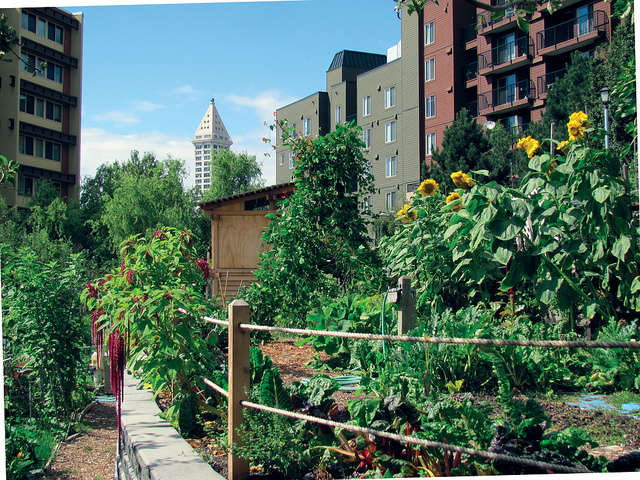9 Simple Techniques For City Blooming
9 Simple Techniques For City Blooming
Blog Article
Some Known Incorrect Statements About City Blooming
Table of ContentsAbout City BloomingNot known Details About City Blooming The Ultimate Guide To City BloomingCity Blooming for BeginnersHow City Blooming can Save You Time, Stress, and Money.
Interested in growing food offer for sale in the City of Chicago? Believing about beginning a neighborhood yard? Modifications to the Chicago Zoning Ordinance permit agricultural uses like community yards and urban ranches in several components of the city. Below is a listing of often asked concerns pertaining to the guidelines and regulations that cultivators ought to consider when preparing an urban agriculture job.
The zoning modification does not customize any kind of other codes managing composting, structure permits, buying or renting City owned residential property, organization licenses or ecological contamination. There are existing codes that manage these concerns and they remain completely result and may apply to your project. Neighborhood gardens are usually possessed or handled by public entities, civic companies or community-based organizations and kept by volunteers.
Urban ranches expand food that is intended to be offered, either on a nonprofit or for-profit basis. Because of their commercial objective, city ranches need a service license. Yes. A community yard is allowed to sell excess produce that was grown on website if the sales are accessory or subordinate to the yard's primary function described above.
Facts About City Blooming Uncovered
Composting is allowed yet just for plant material that is created and made use of on website. The amount of compost material can not go beyond 25 cubic lawns at any provided time according to the criteria in 7-28-715 of the City's Municipal Code. Yes. Due to the fact that the dirt at a lot of brand-new garden websites requires modifying, compost, dirt, timber chips, or other materials can be obtained to construct or boost the growing room - sustainable gardening.

If a structure license is needed then the hoophouse will be thought about an accessory building. You can figure out even more regarding the building authorization requirements by calling the Division of Structures. The 25,000-square-foot size limit is intended to avoid a solitary area yard from controling a provided block or diminishing the block's existing domestic or industrial personality.
The limit does not use to gardens found in Public Open Space (POS) areas. Can there be more than one community yard that is 25,000 square feet on a solitary block? Yes. The dimension limitation puts on private gardens, not to individual blocks. No. Fence is not called for, nevertheless, gardens that have huge parking lot might be needed to mount fencing or various other landscape design features.
Excitement About City Blooming
B1 & B2 districts call for that all business usage activities be carried out inside your home. R districts restrict business activity. The policies show the purpose and intent of the Zoning Code. Is fencing required for city farms? Yes. Fences may be called for, in addition to landscape design and screening, for sure parking lot and exterior work or storage locations depending upon location and the specific task happening.
Urban farms call for building authorizations and zoning approvals prior to building (urban gardening). Various other types of city testimonial may be called for depending on certain frameworks, tasks, size, landscape design, licensing, public health and stormwater management issues.
The Department of Service Matters and Consumer Security can assist establish the particular type of service license that's required. Off street car park is required for many industrial jobs in Chicago. The called for number of parking rooms is based on the number of workers functioning on site and not the square video of the expanding area.
Fascination About City Blooming

Yes. A city farm can offer compost material produced on site, nevertheless, the operation needs to follow the regulations in 7-28-715 of the Chicago Municipal Code. Yes. Aquaponic systems are permitted indoors on city farms in many zoning areas. A zoning testimonial and structure license is needed in order to mount frameworks or systems and a business license is needed as described over.
Approximately 5 hives or nests of honey bees may be kept as an accessory usage. Beekeepers have to sign up with the Illinois Department of Agriculture. For additional information concerning the proposed zoning modification you might call the Department of Real Estate and Economic Development, Bureau of Planning and Zoning at 312.744.8563.
Farming in cities and city areas An urban farm in Chicago. Urban farming describes different methods of cultivating. https://cityblooming.edublogs.org/2024/06/27/city-gardening-transforming-urban-spaces/, processing, and distributing food in metropolitan areas. The term also applies to the area tasks of pet husbandry, tank farming, beekeeping, and cultivation in a city context. Urban agriculture is differentiated from peri-urban agriculture, which occurs in backwoods at the edge of suburban areas.
The smart Trick of City Blooming That Nobody is Discussing
, who visit this page seek to develop social networks established on a common ethos of nature and neighborhood holism. These networks can develop by way of official institutional support, coming to be integrated right into regional community preparation as a "transition community" activity for sustainable city development.
Some of the first proof of urban agriculture comes from Mesopotamia.
Report this page